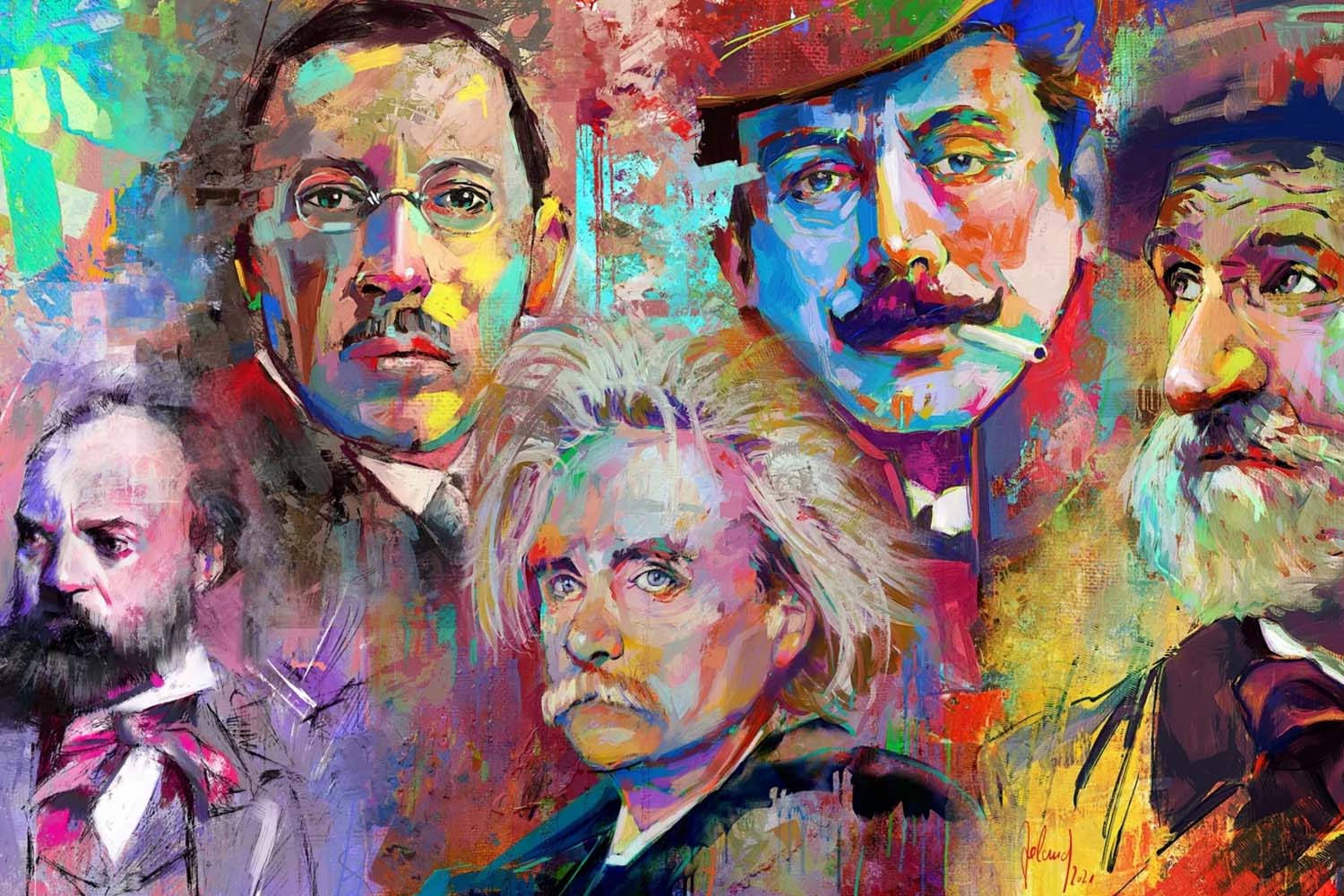Recently, we had a chance to discuss painting and work in Rebelle with one of the Artwork Contest 2021 winners, German artist, Georg Ireland. Read the next lines to learn about his artistic journey and the people who helped him along the way to achieve his painting dreams.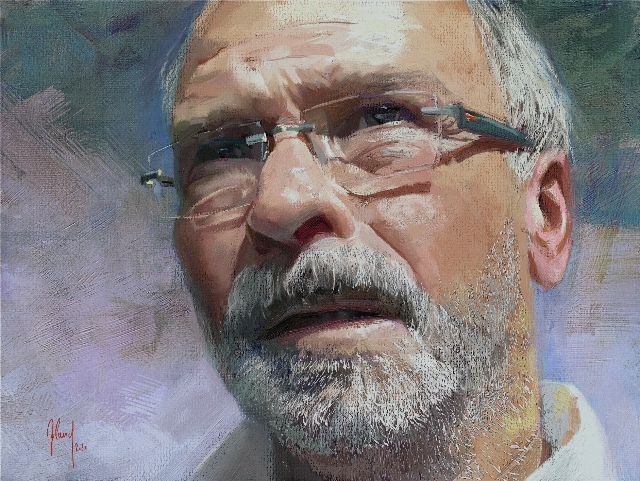
Hello Georg. We are pleased to talk to you today and introduce you to our audience. Could you describe your artistic journey to us?
A heartfelt greeting to all of you, and thank you for giving me the opportunity to present my work on your blog.
My artistic journey actually started only a few years ago. Although I have been painting and drawing since I could hold a pencil and the visual arts have always been a part of my life and artistic activities have always accompanied me, I have no artistic education, and art has always been a minor matter. I studied law and I have a full degree in law that qualifies me to be a judge in Germany. The first years of my professional activities I worked as a lawyer and for the last 30 years before I retired, I worked for an insurance company.
That changed when I retired four years ago. Since then, I have had time and leisure to look after more beautiful things in life, especially to devote my full attention to my artistic activity. I started booking online courses in both traditional and digital painting. Especially the handling of the painting software I use (Rebelle and Corel Painter) was very important to me in the beginning. Although I have been painting digitally since 2008, four years ago I didn't feel quite at home in the world of digital painting.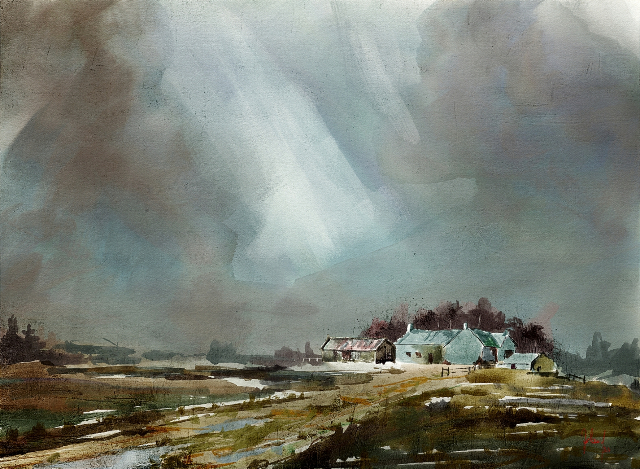
I joined the Digital Art Academy and booked the courses of Karen Bonaker and Skip Allen. I can say today that without Karen and Skip I would not be painting digitally today. They both opened up a whole new artistic world for me and were the initial spark for my artistic development as a digital painter. The same goes for Tim Shelbourne, whose online courses (Painting with Photoshop, Rebelle, and Painter) on www.theartistsquarter.com I had booked in full. Tim is an exceptional artist and teacher and has influenced my painting style a lot. Unfortunately, as of now only the remains of his course offerings are available for purchase on his website.
That was the digital aspect of my artistic development. However, I see myself as an artist who tries to translate traditional painting techniques as realistically as possible into the digital medium. So I have to take care of the traditional painting techniques as well. Since I have no artistic training, I had a lot of catching up to do in this respect. I cover that in various online courses to name a few here: East Oaks Studio, New Masters Academy, and others. I also follow some artists on their Patreon pages, such as Jacob Aguiar, an excellent pastelist and landscape painter. I also follow Susan Lyon, who runs a Patreon page with her husband, Scott Burdick. I have learned a lot about figurative and portrait painting and drawing from both of them.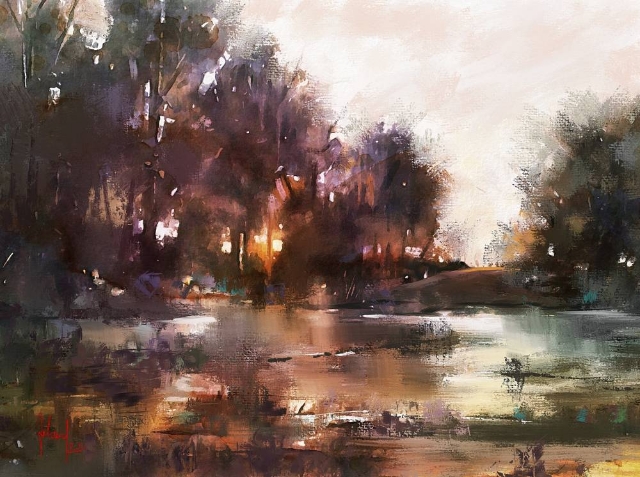
Then there are some artists I admire and who have influenced me in some way. These are in any case and in the first place Richard Schmid, who sadly passed recently, and John Singer Sargent. Both wonderful portrait painters. I think the painting style of the two fascinates and inspires not only me but countless other contemporary artists. The more I engage with it, the more elements I find in contemporary art, which can be traced back to these two painters. Fascinating is the balance between abstraction and realism. Both manage with their painting technique with coarse brushstrokes, to which only small finely crafted details have been added to produce a harmonious and seemingly in every detail worked out portrait.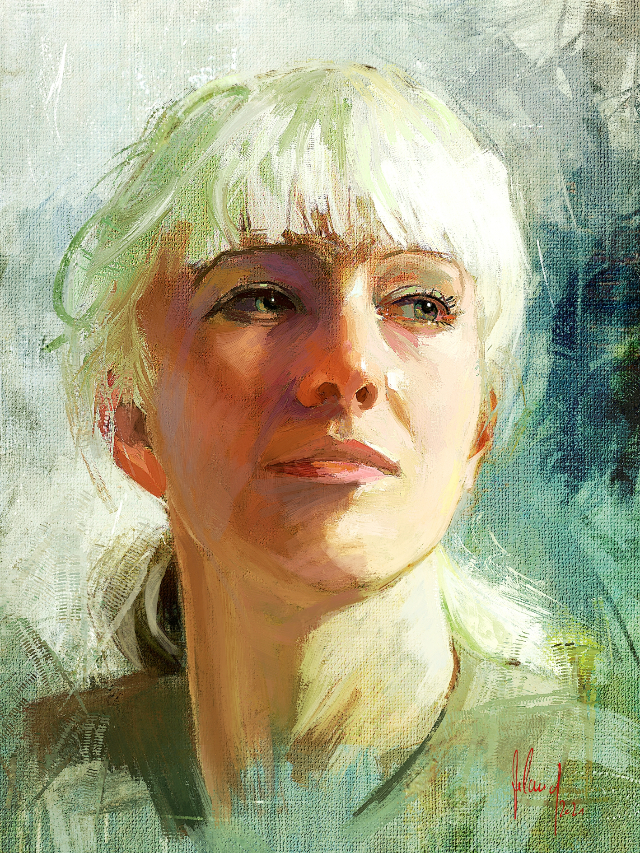
The same applies to the landscapes of Tibor Nagy, my third favorite artist. In addition, he has the enormous power and expressiveness of his sometimes very abstract landscapes, in which the realistic appearance is often indicated by only a few powerful brushstrokes.
You are quite a versatile artist, painting portraits, landscapes, even abstract art, using different wet and dry media. Would you be able to choose your favorite medium and a technique?
I think I am more of a drawer, even when I paint I “draw” with a brush. Therefore, the dry media of charcoal and pencil are my favourite. I find it tremendously relaxing not to have to worry about all the fuss with colours and colour temperatures, but just to concentrate on the right tonal values. For me, it has something almost meditative about it.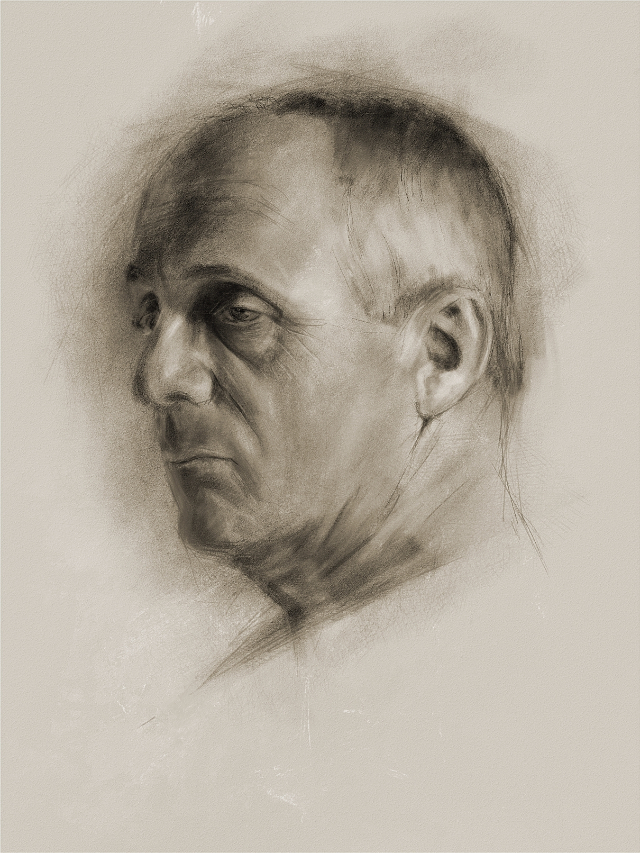
On the other hand, of course, I also like the use of colour. Watercolour has always fascinated me, although I didn't really manage to master the medium neither in traditional nor in digital times. The watercolour feature was the reason why I bought Rebelle originally. It feels so real, like the real thing. So I still have a challenge waiting for me here.
In 2008, you have started with digital painting and fully transitioned from traditional painting over the years. What was the most difficult change and on the other hand what is the greatest advantage of painting digitally?
The most difficult part of the change from traditional to digital ways of working was to get a feeling and understanding of the complex interaction of pressure, brush, and texture. In traditional art techniques, there is always the haptic feedback that brushes, colors, and backgrounds like paper, canvas, or whatever give to you. You can "feel" what's going on. This important element of haptic is completely absent in digital painting. It makes a big difference whether I pass a palette knife over a plaster base or an Art Pen over the surface of a Cintiq.
In digital painting, you have to translate this haptic feeling into the most diverse settings for brush, pressure, paper, and texture. Understanding this and finally learning to implement it, was (and to some extent still is) the biggest challenge for me.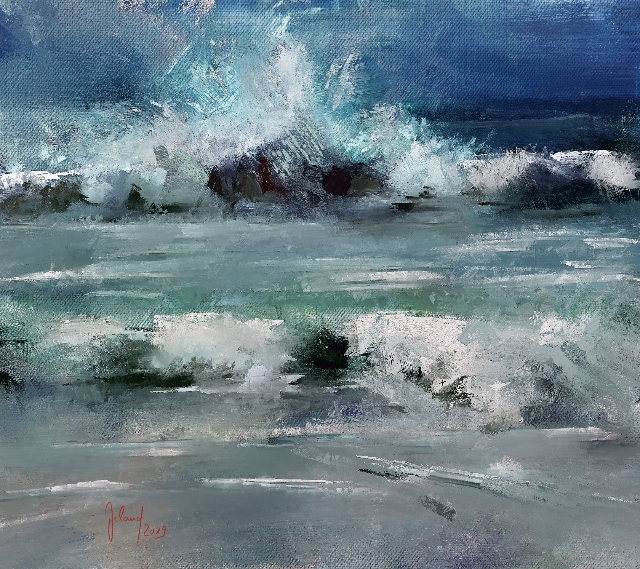
The biggest advantage that digital painting offers to me was the reason why I started digital painting in the first place. In one sentence and indeed that's the only reason: I found the fact of not having to clean brushes anymore irresistible.
As a student, and later on alongside my job, I painted only casually in my spare time on the weekends or on vacation. And then it was an effort to get the paint, brushes and easel out, only to find out in the worst case that my muse was out that day... And then it was an effort to clean everything and put it away again. This stopped me very often from painting at all because the effort in the limited time was just too big.
Quite different with digital painting: Suddenly it's so easy to get started, just turn on the computer and a whole artist's studio is at your disposal. And when you quit, you save your work and shut down the computer. Now, I could be artistically active in any spare time, even for one hour during my lunch break. And that has not changed to this day.
Another big advantage: the undo button, which has become second nature to me. And just how much this has become second nature to me was shown the other day when I was sketching in pencil in the traditional way - which I still do occasionally. I found myself moving my hand in the direction of the top left, where I usually have the undo button to undo an incorrect pencil stroke.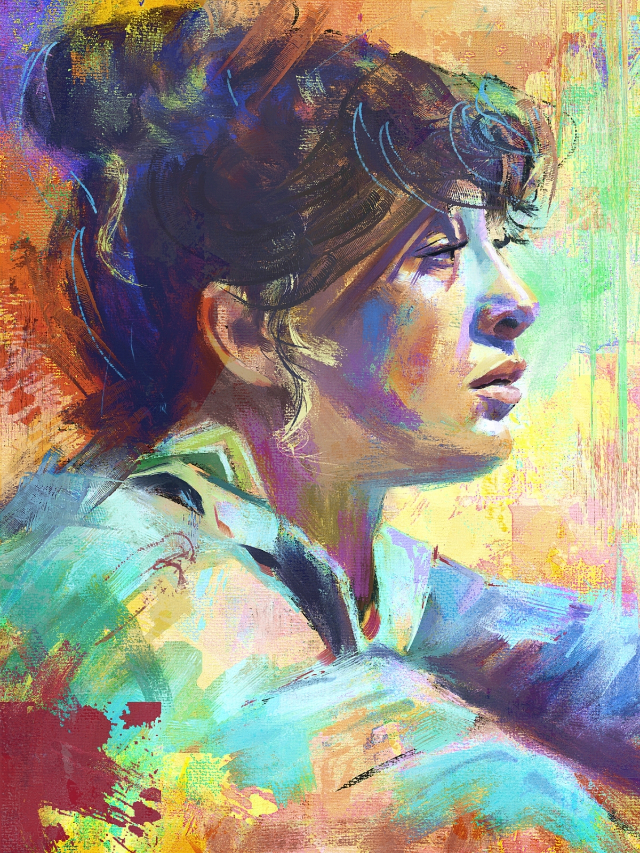
What does your digital studio look like? What tools do you use and how much time do you spend there?
These are the tools that I use:
PC, Win 10Pro, 64 Bit, Intel(R) Core(TM) i7-9700KF CPU @ 3.60GHz 3.60 GHz
32 GB RAM, NVIDIA GeForce GTX 1660
Wacom Cintiq 24 HD to work on
Two 24” Monitors for palette drawers and reference photos
Software: Rebelle and Corel Painter
How many hours I spend in my studio varies a lot, it can be from 8 in the morning until 10 at night or on other days for 1 or two hours, maybe an average of 40 hours a week.
You have been using our software for a couple of years now. How does Rebelle fit into your workflow?
As I just said, I work with Rebelle and Corel Painter and often with both programs on the same image, switching back and forth, saving the file as a .psd file to preserve the layer hierarchy in both programs. This way I can filter what works best for me from both.
I definitely love the watercolour feature in Rebelle. I feel there is a lot of potential for me to discover there. I just need to play more with it to get the right feel for the settings.
The oil brushes in Rebelle 4 are becoming my favourite. In the beginning, I didn't like the appearance of the new oil brushes very much. But the more I worked with them, the more I could get a feeling for subtle settings that work for me. In the meantime, the oil brushes in Rebelle are my go-to brushes when it comes to a digital oil painting.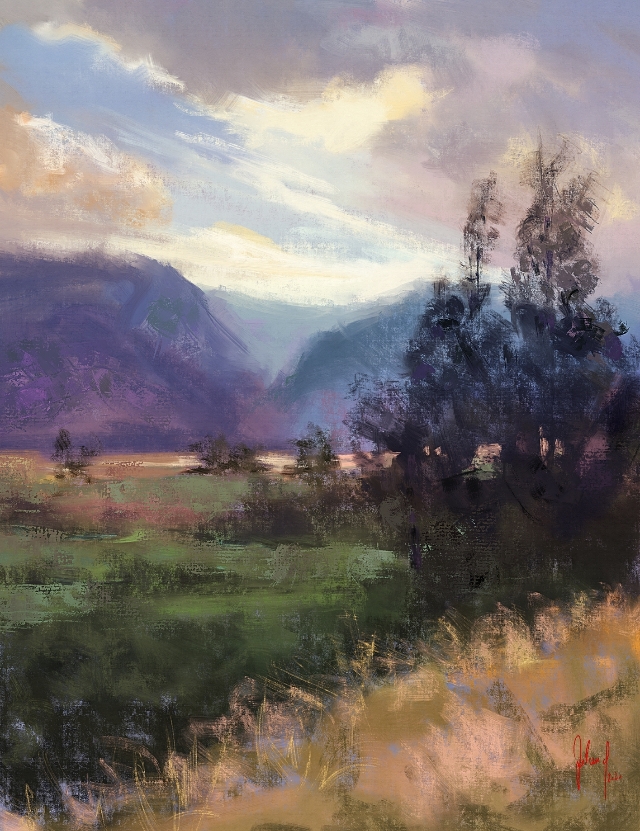 Finally, I like using Rebelle for sketching.
Finally, I like using Rebelle for sketching.
So Rebelle works for me as an all-rounder. The fact that I still use Corel Painter is simply because I know the software inside-out and have some brushes and tools there that I have perfected over the years to suit my needs.
With the increasing development of digital painting tools, many traditional artists are at the crossroad of deciding whether or not to move their workflow to the digital space. What would be your advice for them?
I would advise them to try it out. It can only be a winning experience. It may not work out for everyone, but with relatively low investment costs, everyone has the chance to open up completely new horizons, either with digital painting alone or combining traditional and digital art.
Is there a feature that you are still waiting for to appear in digital painting? Anything that you still miss, comparing to the possibilities of traditional painting?
I don't need to be able to smell the paint, but what would be fantastic is if digital brushstrokes applied with thick paint could also be felt on the canvas using 3D printing. That can't be that hard, can it?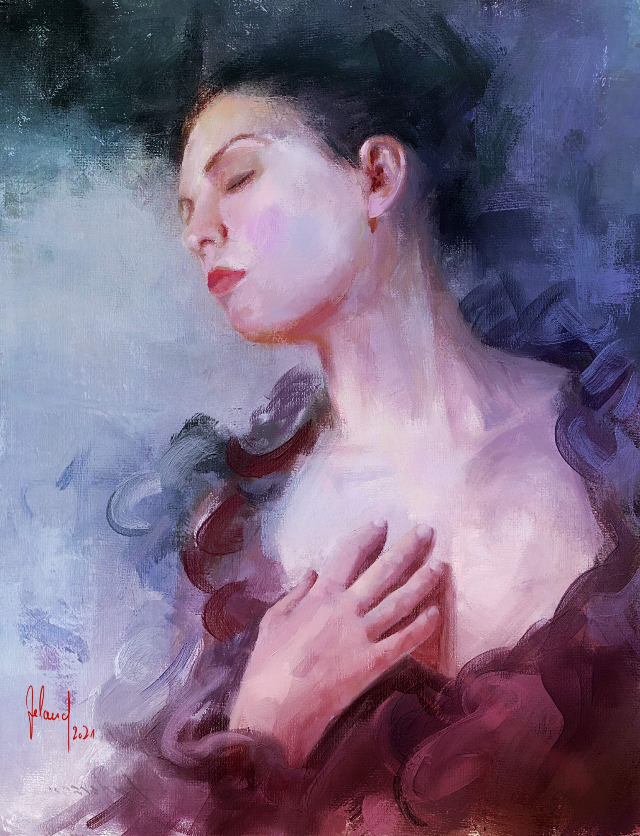
We are sure many of our readers are interested in seeing more of your art. Where can we find your portfolio?
You can visit my website and my blog, which I try to serve as often as possible. You will also find there some insights into the way I work and some useful things to download.
Thank you, Georg, for taking the time to talk about your artistic journey. We wish you many creative days with digital tools, many inspiring artists that cross your way, and enough time you can dedicate to your passion.
----
Visit Georg's portfolio in our Community Gallery:
https://www.escapemotions.com/community/user/Ireland/portfolio/
Follow Georg Ireland on social media:
Facebook: https://www.facebook.com/people/Georg-Ireland/100010648099385/
Instagram: https://www.instagram.com/georg.ireland/
Purchase his artwork at: https://www.kunstkopie.de/a/georg-ireland.html
Commission a portrait at: http://ko-fi.com/georgireland/commissions

